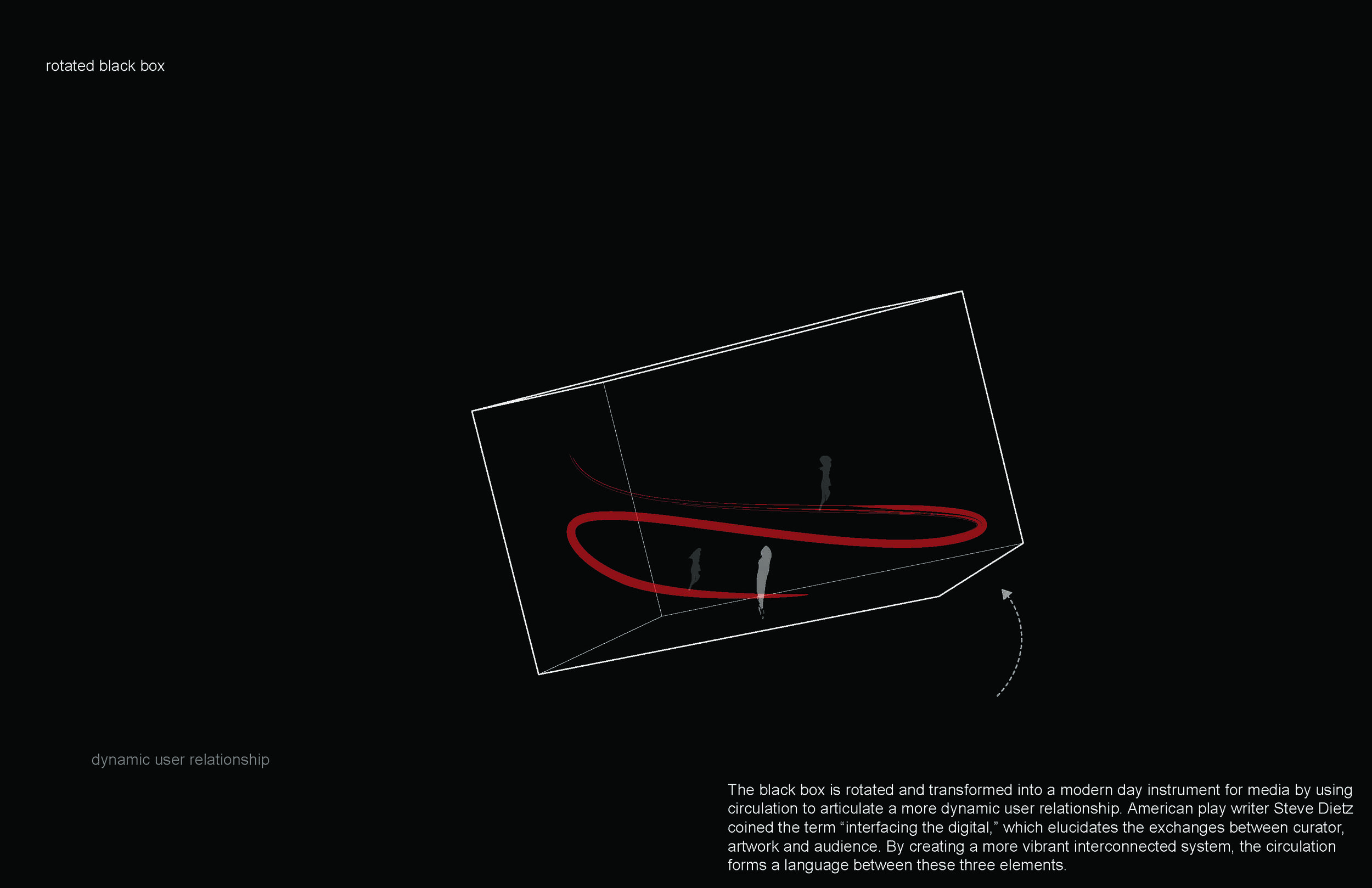Center For Experimental Media and Performance
The concept for the Center spins around the notion of a system composed of a constant and a multitude of changing variables.Highlighting the stair regularity curates a sequence, with the stair functioning as a familiar controlled and measured entity. Circulation is utilized as a constant with the changing idea of new media as the variable.
The conventional black box relies on a static user relationship based primarily on seating and a one-way transfer of information. Here, the black box is reinvented through a slight rotation, transforming it into a modern day instrument for media and utilizing circulation to articulate a more dynamic user relationship. The rotation allows for the activation of the outdoor space, ushers a flow of light into the lower floor, and constructs a visual connection with the existing conditions.
Professor Jeremy Ficca with Mick McNutt
Can a dynamic relationship exist between art and user?
The concept for the Center spins around the notion of a system composed of a constant and a multitude of changing variables.Highlighting the stair regularity curates a sequence, with the stair functioning as a familiar controlled and measured entity. Circulation is utilized as a constant with the changing idea of new media as the variable.
The conventional black box relies on a static user relationship based primarily on seating and a one-way transfer of information. Here, the black box is reinvented through a slight rotation, transforming it into a modern day instrument for media and utilizing circulation to articulate a more dynamic user relationship. The rotation allows for the activation of the outdoor space, ushers a flow of light into the lower floor, and constructs a visual connection with the existing conditions.
This gesture compliments the existing open space in front of the church as well as forms a connection between the existing and newer urban fabrics. The ribs increase in size to accentuate their directionality and elongate the dialogue between the spaces.The program is separated into three levels of exposure, which serve as the primary organizational drivers. The visible, which is seen but not accessible to outsiders, the accessible, which contains the primary open spaces of the program, and the hidden, which is concealed.






















